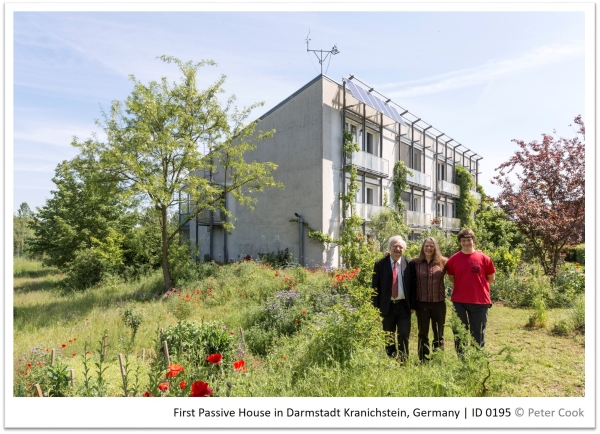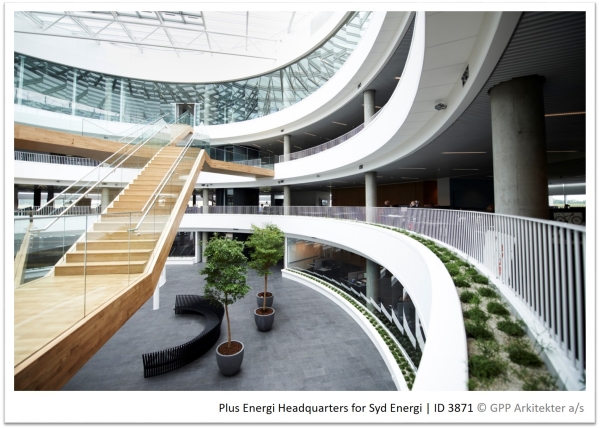1. What is a Passive House?
| Site: | Passive House Online Training | Passive House Institute |
| Course: | Passive House for Decision makers |
| Book: | 1. What is a Passive House? |
| Printed by: | Guest user |
| Date: | Saturday, 1 November 2025, 4:06 PM |
1 - Video presentation
TRANSCRIPT
Whether we are already feeling the effects of climate change personally or seeing it more and more in the news, let‘s take action to improve our future! The building sector represents 1/3 of CO2 emissions so there is a big potential for improvement. But how to get started?
Let‘s keep it simple with passive strategies! Take this coffee machine and thermos flask: The coffee machine needs to be actively kept warm, because it is losing a lot of energy to the outside. Meanwhile the thermos flask is passively keeping the heat inside thanks to its high quality envelope. Now would these principles also work for a house?
Just follow the 5 Passive House Principles! First, an excellent continuous insulation layer to keep the heat inside. This insulation will be interrupted by windows, but thanks to their low heat transfer coefficient value and insulated frames they will keep the heat inside. What is more, they will allow free solar gains in winter. While in summer, appropriate shading will keep heat loads outside the building. One continuous airtight envelope is also needed to avoid air leakages and thus heat leakage and moisture problems. It is also important for a passive house to be thermal bridge free. The insulation layer should be continuous and provide a uniform thermal resistance. Moreover, a passive house needs an efficient ventilation system with heat and/or humidity recovery depending on the climate. The cold outdoor air is warmed up by the hot extract air thus reducing heat losses. And in the summer the whole arrangement also keeps the heat out!
So that is how we get a building that can be heated or cooled solely via the fresh air from a ventilation system. That is to say a comfortable building that consumes so little energy, that it can easily be supplied with renewable energy. So forget about the big boiler and air-conditioner, and move on to the next video to learn more about the benefits of Passive Houses!
TO REMEMBER
- Passive House + Renewables = NZEB
Energy efficiency, thermal comfort and excellent air quality
- 5 Passive House principles
- Insulation
- Passive House windows
- Airtightness
- No thermal bridges
- Mechanical ventilation
2 - Further material
History of the Passive House concept
In 1988, Dr Wolfgang Feist and Bo Adamson started to research further the idea of a "House without heating" meeting the common comfort criteria in Central Europe. The first Passive House was finally built in 1991 in Darmstadt Kranichstein, Germany. The dwelling was monitored in detail: for more than 25 years, it has been consuming on average less than 10kWh/m²a heating energy!
In the meantime the Passive House concept first spread throughout Europe and rapidly gained more interest internationally. There are currently over 60,000 residential and non-residential units in existence worldwide. The current objectives are to continue reducing additional construction costs for Passive House buildings and further adapt the concept worldwide. Since 2015, a special recognition is given to projects generating renewable energy and having an even higher overall energy efficiency than a traditionnal Passive House: Check out the new Passive House Plus and Premium classes!Going into details
If you would like to get more technical information about the Passive House standard, you are welcome to have a look at our green brochure. In addition to that, you will find more in-depth articles on the Passipedia website. Whether you are interested in new build, retrofits or the link between Passive House and renewable energy supply, you’ll soon have a better overview of the Passive House concept's numerous application possibilities!
And for those who want to go even further, why don’t you check another Passive House e-learning course or take part in some in-class training?
